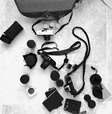SL - focusing on moving subject
-
Recently Browsing 0 members
- No registered users viewing this page.
-
Similar Content
-
- 20 replies
- 659 views
-
- 4 replies
- 561 views
-
- 214 replies
- 15,325 views
-
- 2 replies
- 1,026 views
-
- 11 replies
- 2,468 views
-




Recommended Posts
Join the conversation
You can post now and register later. If you have an account, sign in now to post with your account.
Note: Your post will require moderator approval before it will be visible.